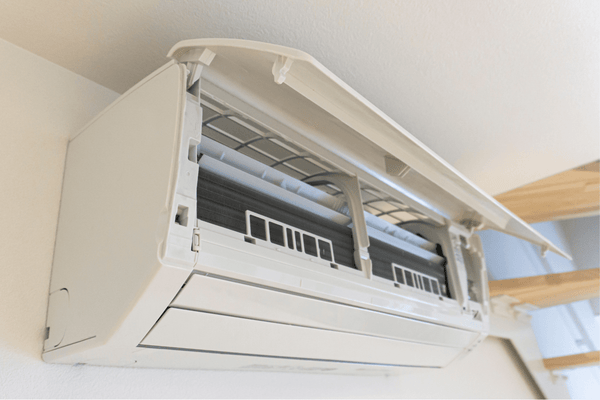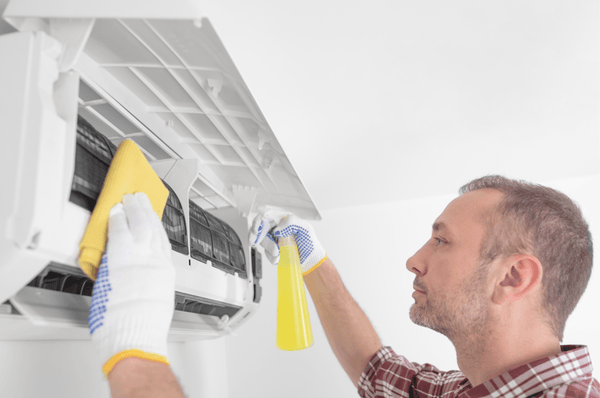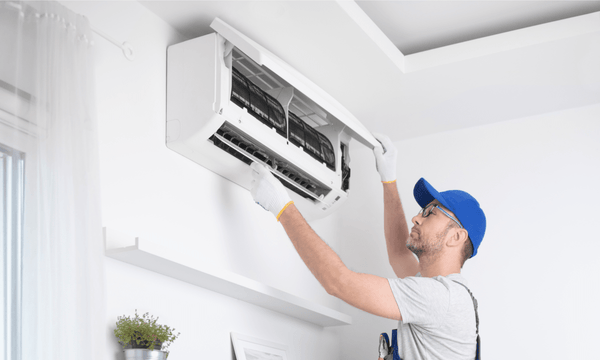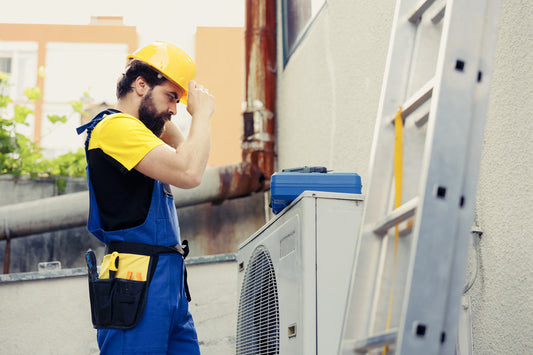How to Clean Indoor AC Coils
Maintaining your air conditioning (AC) unit is crucial for ensuring it runs efficiently and effectively. One key aspect of this maintenance is cleaning the indoor AC coils, which play a vital role in the cooling process. This guide will walk you through the importance of AC coils, preparing for the cleanup, a step-by-step cleaning guide, and maintaining your AC coils.
Understanding AC Coils and Their Importance
The evaporator coils in your AC unit are responsible for absorbing heat from the air in your home. Over time, these coils can accumulate dust, dirt, and other debris, leading to decreased efficiency, higher energy bills, and a shortened lifespan for your unit. Keeping these coils clean ensures your AC runs smoothly, providing clean, cool air while operating as efficiently as possible.

The Role of Evaporator Coils
Evaporator coils are found in the indoor part of your AC unit. They contain refrigerant that absorbs heat from the air as it passes over them, cooling your home. These coils are crucial for the heat exchange process, making their cleanliness directly related to the AC unit's performance.
Why Cleanliness is Key
Dirt and debris on the coils can act as insulators, reducing the coils' ability to absorb heat. This inefficiency forces your AC unit to work harder, increasing wear and tear and leading to higher energy consumption. Regular cleaning can prevent these issues, ensuring your unit operates at peak efficiency.
Preparing for the Clean-Up
Safety and preparation are paramount when cleaning your AC coils. Ensuring you have the right tools and understanding the steps involved can make the process smoother and more effective.
Safety First: Powering Down
Always turn off the power to your AC unit before beginning any maintenance. This can usually be done at the circuit breaker box, ensuring a safe environment to work in.
Gathering Your Cleaning Supplies
You'll need a few supplies, including a coil cleaner, water, a spray bottle, protective gloves, and possibly a soft brush or compressed air. Choosing a coil cleaner designed for AC units is crucial, as harsh chemicals can damage the coils or pose health risks.
Step-by-Step Cleaning Guide
Cleaning your AC coils doesn't have to be a daunting task. By following these steps, you can ensure your coils are clean and your unit is running efficiently.
Accessing the Coils
The first step is to locate and access the evaporator coils. This may involve removing a panel on your indoor unit. Consult your AC's manual for specific instructions, as the location and access method can vary.
Applying the Cleaning Solution

Once you've accessed the coils, apply your chosen coil cleaner according to the manufacturer's instructions. It's important to cover the coils evenly, ensuring the solution reaches all areas of the coils.
The Rinse Off
After allowing the cleaner to sit for the recommended time, gently rinse the coils with water. Be careful to use a gentle flow to avoid bending the fins on the coils.
Dealing with Stubborn Grime
For particularly stubborn areas of grime, a soft brush or compressed air can be used to carefully remove the buildup. It's important to be gentle to avoid damaging the coils.
After the Clean-Up
Once the coils are clean, it's time to inspect your work, reassemble your unit, and consider ongoing maintenance to keep your AC in top condition.
Inspecting Your Work
After the coils have dried, inspect them for any missed areas or remaining debris. This is also a good opportunity to check for any potential damage that may need professional attention.
Reassembling and Powering Up
Carefully reassemble any components you removed during the cleaning process. Once everything is back in place, you can turn the power back on and enjoy the benefits of a clean AC unit.
Maintaining Your AC Coils
Regular maintenance is key to ensuring your AC unit continues to operate efficiently. This includes not only cleaning the coils but also considering when it might be time to call in a professional.
Regular Maintenance Schedule
Cleaning your AC coils should be part of your regular home maintenance schedule. Doing this at least once a year can prevent buildup and ensure your unit is ready to cool your home efficiently when you need it most.
When to Call a Professional
If during your inspection you notice any damage, or if your AC unit isn't cooling effectively even after cleaning, it may be time to call a professional. HVAC technicians can provide a thorough inspection and perform any necessary repairs or maintenance.

Conclusion
Cleaning your indoor AC coils is an essential part of maintaining your air conditioning unit. By following the steps outlined in this guide, you can ensure your AC operates efficiently, providing clean, cool air to your home. Regular maintenance, including coil cleaning, can extend the life of your unit, save on energy costs, and improve your indoor air quality.
FAQs
How often should indoor AC coils be cleaned?
Clean your indoor AC coils at least once a year to prevent buildup and maintain efficiency.
What should I use to clean the AC coils?
Use a biodegradable coil cleaner specifically designed for AC units to avoid damaging the coils.
Can I clean AC coils myself?
Yes, with the right tools and precautions, you can clean AC coils yourself. However, if you're unsure or uncomfortable, it's best to call a professional.
What are the signs that my AC coils need cleaning?
Signs include reduced cooling efficiency, higher than usual energy bills, and ice formation on the coils.
What happens if I don't clean my AC coils?
Neglecting to clean your AC coils can lead to reduced efficiency, higher energy costs, and potentially costly repairs or premature unit failure.
By adhering to this guide and maintaining a regular cleaning schedule, you can enjoy a more efficient, effective, and long-lasting air conditioning system.





